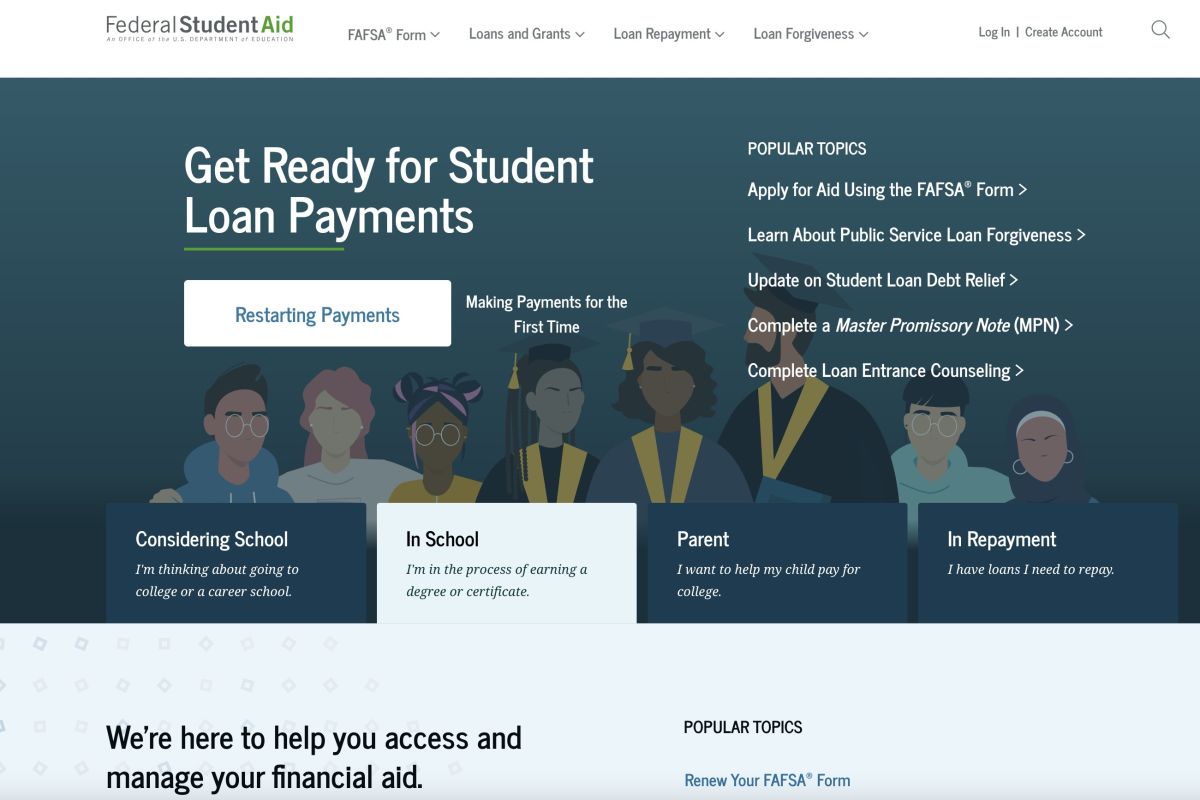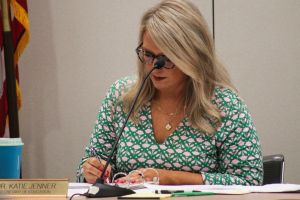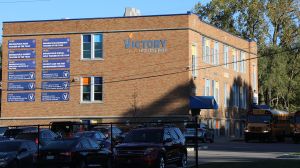
Federal student loan repayments begin again in October.
It’s been more than three years since federal loan repayments were paused because of the COVID-19 pandemic. In October, the freeze will be over for more than 900,000 Hoosiers.
Borrowers shouldn’t wait until the last minute to start the repayment process, said Josh Garrison, Commission for Higher Education senior associate commissioner and chief of staff.
“In October, millions of students across the country are entering into repayment,” Garrison said. “And it's very important that they start that process early.”
Garrison compared the hassle of setting up repayment accounts last-minute to traveling over the holidays: call times and wait times are going to be long. He said it’s a good idea to set up automatic payments and check out studentaid.gov for more information.
The Education Data Initiative said 92 percent of the more than 45 million borrowers who take out student loan debt have federal loans. The national average for student debt once a graduate leaves school is about $37,000. Indiana’s average is a bit lower at $25,000, according to the Indiana Commission for Higher Education.
Bill Wozniak, vice president of InvestEd’s communications and student services, said InvestEd works exclusively with Indiana residents in more than 900 events every year to provide free financial advice for every stage of higher education. It’s a confusing time for borrowers, he said.
“Students and borrowers and families, they always think that they're the only one with a question, or that everybody else knows the answer, and they're the only one who doesn't,” Wozniak said. “And it's not true.”
What if borrowers don’t know who or how much to pay?
Wozniak said millions of borrowers were transferred to different providers during the three year pause. People may have to pay their loans through a company they’ve never heard of.
The Federal Student Aid website tells borrowers who manages their loans, how much they owe and what repayment options are available. Accounts are linked to a borrower's social security number. Borrowers should also set up accounts with their student loan servicer to make payments.
Payments begin in October, but the exact due date depends on the service provider. Phil Schuman, Indiana University’s senior director of financial literacy, said providers are required to reach out 21 days before payments start.
“So in theory, most people should have heard by now what the requirements are for making those loan payments,” Schuman said.
Do borrowers really have to pay back their loans now?
Yes, borrowers really have to make payments starting in October.
With President Joe Biden’s administration's on-ramp plan, borrowers can miss a payment without being sent to collections, damaging their credit or defaulting on their loans until October 2024.
“A lot of people have taken that to mean, ‘I just don't have to pay,”’ Wozniak said.
That’s not a good idea, Wozniak said. Missing payments can disqualify a borrower for forgiveness programs, or they can end up paying more over time.
“So the mindset of, ‘I really don't have to pay, I’ll see what happens in a few months,’ could really cost you down the road,” Wozniak said.
FSA encourages borrowers to reach out to providers as soon as they have issues making a payment to discuss lowering their monthly payments. People in “short-term financial binds” might qualify for deferment or forbearance, FSA said. Still, interest will accrue. Time spent in deferment or forbearance also does not count toward loan forgiveness timelines.
Read more: As student loan repayments resume, new SAVE plan may be more manageable for some borrowers
What repayment plans are available?
New changes were implemented by Biden this year to make choosing a repayment plan easier.
All borrowers are automatically enrolled in the standard repayment plan, which means they will make fixed payments for 10 years. However, eligible borrowers can opt in to other graduated, extended or income-driven repayment plans.
People can use the loan simulator on studentaid.gov to get an estimate of their monthly payments with various plans. InvestEd also provides free, personalized loan check-ups, Wozniak said, meaning InvestEd will assess the best options for repayment.
The Biden administration announced changes to the SAVE plan earlier this year. The plan caps monthly payments at five percent of a borrower’s discretionary income and forgives outstanding undergraduate loan balances after 20 years. People making less than about $15 an hour will have a $0 monthly payment.
But borrowers have to opt-in and apply to these plans, Wozniak said, and if people don’t examine their options, they might repay more than they need to.
“We don't want people to ... bury their head not look at their accounts, not do the examination of what's available,” Wozniak said. “Because things such as Public Service Loan Forgiveness or this newly announced SAVE repayment plan — these different types of things are often helpful to people that are living paycheck to paycheck or having a little more difficulty.”
InvestEd provides free student loan check ups, providing personalized information for Indiana borrowers, Wozniak said. He said InvestEd helps borrowers get on the best plan for repayment and helps them understand if loan forgiveness is an option.
What about federal student loan forgiveness?
Last year, the U.S. Supreme Court struck down the Biden administration’s plan for loan forgiveness of up to $20,000 per person, leaving most borrowers on the hook for repayment.
Some forgiveness options are still available, but the FSA website states some repayment plans such as the standard plan aren’t good options if a borrower wants to qualify.
Income-driven repayment plans, such as the SAVE plan, typically result in loans being erased after 20 years of qualifying payments.
Public Service Loan Forgiveness is an option for people who work for some nonprofits or state, federal, local and tribal governments. After 10 years (or 120 payments), a borrower’s direct loan balance will be erased if they make payments while working full-time for an approved employer. A borrow must be on an income-driven repayment plan for PSLF.
Teachers in low-income schools also have an option for loan forgiveness. If they teach full-time for five consecutive years they might qualify for up to $17,500 in Teacher Loan Forgiveness.
What do we know about college costs and debt in Indiana?
Garrison said Indiana is one of the most generous states in the U.S. in terms of need-based financial aid awarded — it’s no. 5 in the country and no. 1 in the Midwest. Comparatively, the Commission for Higher Education reports average student debt in Indiana is lower than Ohio, Michigan and Illinois. When students take out loans, it averages to about $5,000 each year.
Tuition costs in Indiana are also some of the lowest in the country, and Garrison said costs have decreased when inflation is taken into account. The Commission for Higher Education has many scholarship and grant opportunities to make college more affordable.
Higher education — anything from a short-term certificate to a four-year college — typically has a strong return on investment, Garrison said. People with degrees make more money in their lifetime and have lower unemployment rates.
“By pretty much all economic metrics, the higher education, [the more] opportunities you're going to have,” Garrison said. “You just need to make wise choices when you're deciding what you're going to do and where you're going to spend your money for college.”
Kirsten is our education reporter. Contact her at kadair@wfyi.org or follow her on Twitter at @kirsten_adair. Contact WFIU/WTIU's Aubrey Wright on Twitter at @aubreymwright or email her at aubmwrig@iu.edu.











